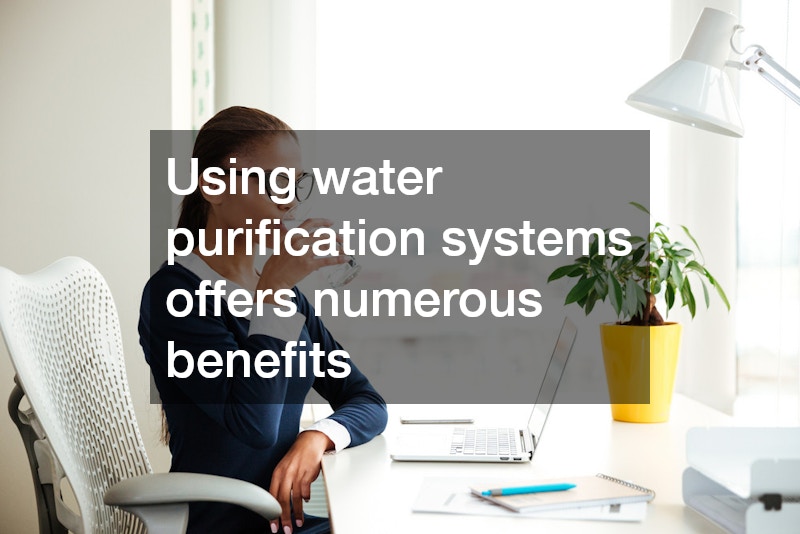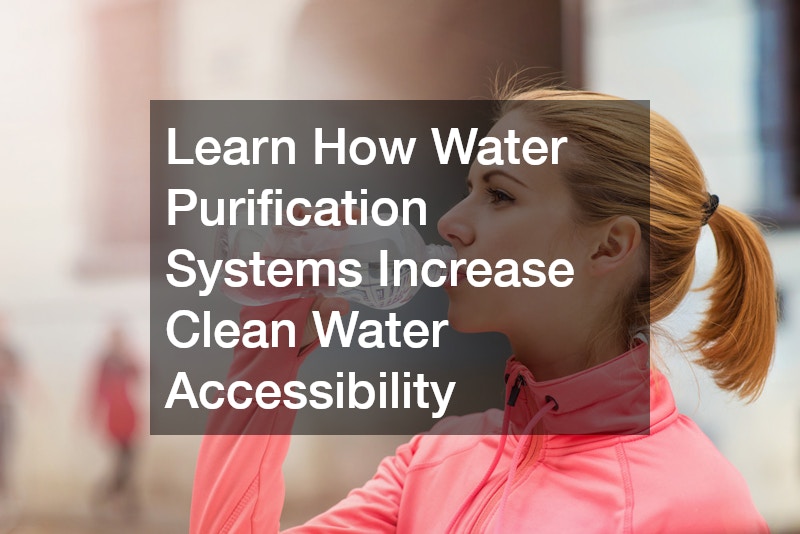Water purification systems play an important role in enhancing access to clean water. Water is essential for life, and its availability can determine the health and well-being of individuals and communities. In a world where access to clean water is still a challenge in many regions, understanding how purification systems work and their impact becomes crucial.
Technology and innovation have provided solutions for many global challenges, and water purification systems are at the forefront of ensuring clean water access. These systems employ various methods to remove contaminants and ensure that drinking water is safe and healthy. As issues surrounding water scarcity and pollution continue to grow, so does the need for effective purification technologies.
What Are Water Purification Systems?
Water purification systems are technologies and methods used to remove contaminants from water. These systems can range from simple household filters to large-scale municipal treatment plants designed to serve vast populations. Understanding the different types of systems available reveals how diverse the approaches to water purification can be.
Common methods of water purification include filtration, sedimentation, and advanced techniques like reverse osmosis. Each method targets specific contaminants and varies in efficiency and cost-effectiveness. These systems are essential in ensuring that even the most polluted sources of water can be treated to make them safe for human consumption.
The availability and implementation of water purification systems directly influence community health outcomes. Technologies such as UV light disinfection and activated carbon filters play a crucial role in preventing waterborne diseases. By investing in these systems, communities can significantly enhance their quality of life and overall health.
How Do Water Purification Systems Work?
Water purification systems use various processes such as filtration, distillation, and chemical treatment. Filtration systems physically remove particles from the water, while distillation relies on heat to separate impurities based on boiling points. Chemical treatments, such as chlorination, are critical in killing pathogens that may not be removed through physical processes.
Each method is tailored to target specific impurities, which can range from bacteria and viruses to heavy metals and chemicals. For instance, reverse osmosis can effectively eliminate dissolved minerals and pollutants, making it a popular choice for certain applications. Understanding these methods allows us to appreciate their complexity and the science behind making water safe for consumption.
Moreover, the choice of purification method often depends on the source and quality of the water being treated. Urban areas may have different needs compared to rural regions, leading to varied implementation strategies. As water quality standards continue to evolve, so too do the technologies and systems used to meet these demands.
What Are the Benefits of Using Water Purification Systems?
Using water purification systems offers numerous benefits, including improved health, reduced disease transmission, and environmental sustainability. Accessing clean water can drastically lower the incidence of illnesses caused by contaminated water, such as cholera and dysentery. This aspect is particularly vital in developing countries, where such diseases can spread rapidly in populations with inadequate access to safe water.
Additionally, water purification systems contribute to environmental sustainability by reducing the reliance on bottled water and decreasing plastic waste. By ensuring that communities have access to clean, treated tap water, the consumption of single-use plastic bottles can be minimized. This shift not only benefits individual health but also has a long-term positive effect on the environment.
Furthermore, water purification technologies can lead to economic benefits by improving productivity and fostering community development. Healthier populations can engage more fully in educational and economic activities, thus enhancing local economies. The effectiveness of these systems in promoting a healthier populace underscores their crucial role in societal advancement.
How Do Water Purification Systems Improve Community Health?
Access to clean water significantly impacts community health, reducing cases of waterborne diseases. Many communities suffer from outbreaks of illnesses due to contamination, which can often be traced back to unpurified water sources. This section will showcase how investment in water purification technologies reduces these risks dramatically.
Statistics indicate a direct correlation between improved water quality and reduced health burdens in many regions. For instance, countries that have implemented comprehensive water purification systems often report lower hospital admission rates due to waterborne illnesses. This data underscores the necessity of prioritizing clean water access in public health strategies.
Studies have shown that for every dollar invested in clean water, significant savings on health care costs are realized. Preventing diseases caused by contaminated water can save families from medical expenses and loss of productivity. Therefore, water purification systems are not just a health measure; they are also a sound economic investment for communities and nations.
What Role Do Water Purification Systems Play in Disaster Relief?
In times of crisis, such as natural disasters, water purification systems become essential for restoring clean water access. Disasters often disrupt typical water supply routes, leading to contamination and limited access to safe drinking water. Emergency responders rely heavily on portable purification technologies to provide immediate relief.
Adequate water purification during emergencies can significantly reduce the incidence of disease outbreaks among affected populations, shielding them from further suffering. Organizations that provide disaster relief prioritize establishing temporary sanitation and purification systems to prevent long-term health crises. The effectiveness of these systems helps mitigate the immediate impact of disasters on community health.
Humanitarian efforts have increasingly recognized the importance of sustainable water management practices, integrating purification technologies into disaster preparedness plans. Training local communities to use and maintain these systems ensures long-term resilience against future water crises. Knowledge transfer and capacity building enhance the impact of water purification systems during and after disasters.
Water purification systems are vital tools in increasing clean water accessibility, enhancing public health, and ensuring efficient disaster response. Their technological advancements and methodologies play a crucial role in addressing one of humanity’s most pressing challenges—access to safe drinking water. Continued investment in these systems is crucial for global health and sustainability, ensuring that future generations have access to the essential resource of clean water.
As the world grapples with climate change, pollution, and population growth, the importance of effective water purification will only become more pronounced. By fostering a culture of innovation and responsible water management, we can create a sustainable future where clean water is a right for all. Collaboration among governments, organizations, and communities will be necessary to achieve these goals.
Water purification systems symbolize hope and health for many around the globe. By investing in accessible technologies and promoting education about water safety, we can enhance the quality of life for millions. As stewards of our planet, it is our responsibility to ensure that clean water access is a reality for everyone, everywhere.







